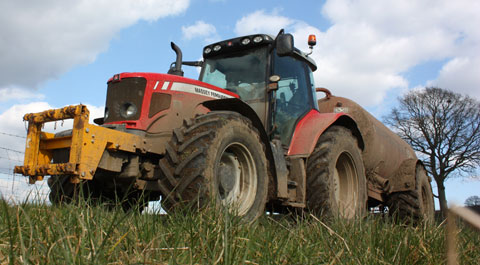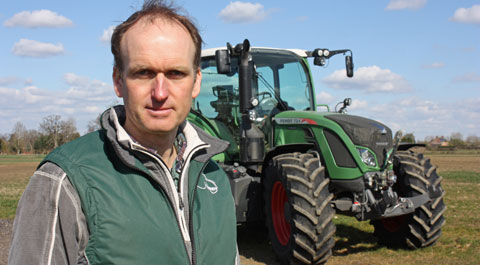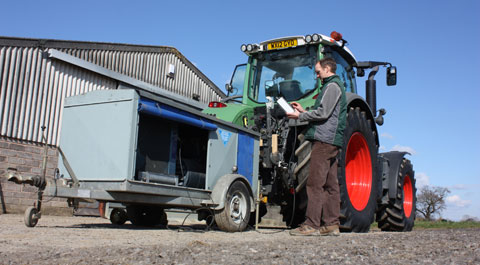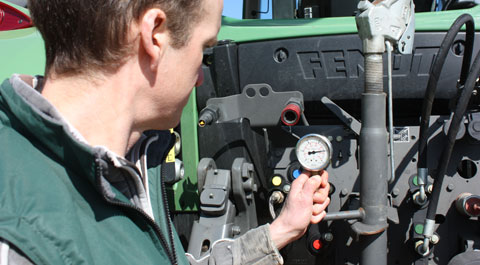Top tips for buying a used tractor

The market for second-hand machinery could barely be more competitive than it is right now.
Soaring prices for new kit and a favourable exchange rates have dragged used kit values up to the point where the prices paid are often close to the figures that those machines originally sold for when new.
So it’s no longer an insignificant sum required to secure a 4,000 to 5,000-hour workhorse. That means there’s more reason than ever to carefully scrutinise the machines in the running.
Between them, Andy Doel and his father Tony have been selling used tractors and combines for some 40 years.

Based near Trowbridge in Wiltshire, Southwick Tractors has gained a reputation for dealing in top-end machinery both here in the UK and for export. Farmers themselves, they know the importance of having reliable up-together kit and the headaches that can be had when you’re sold a pup.
“There’s nothing worse than shelling out a big lump of cash on something that appears to be in mint condition only to find when you get it home that it’s a dog,” says Andy.
“But there are ways to avoid dodgy second-hand buys and that starts with the price – if it seems too cheap, it probably is.”
INTERNET
In many ways the world-wide web has revolutionised the way we buy used machinery. Rather than just depending on the stock in dealers’ yards within a 15 mile radius of the farm, there’s now so much more choice.
But there are plenty of sharks out there ready to take advantage. The number one rule is to make sure you go and see the machine.
If you’re serious about buying it, before you take the trip to go and see it, ask to be sent scans of the registration document or ask for the reg plate. That way you can do a bit of homework by phoning the previous owner or the DVLA to see that it is exactly what it is advertised as.
Never part with any cash until you’ve seen the machine in the flesh.
Essential checklist for buying a used tractor:
- First impressions – if it looks like it’s been abused then it’s unlikely the damage is only cosmetic
- Maintenance – service books are pretty irrelevant as they rarely get filled in. Check the filters themselves to see if they’ve been marked up with the hours of the last service or if you really want to know the history, phone the dealer where the tractor originally came from – the sticker will probably still be on the bonnet. If in any doubt at all, ask to see the V5 registration document and get the name and address of the previous owner. A spot of Googling will quickly result in a phone number and if they’re already shifted the machine on they’ll have no reason not to be 100% straight about their reasons for sale and how well the tractor has been looked after.
- Dyno test – even small second-hand dealers should have access to a dynamometer. Ask to see the tractor run up to full chat to provide assurance it’s pumping out what it should at the shaft. Anything more and that indicates it’s either been chipped or fiddled with in some other way. If power output is significantly below par then there’s obviously something up with the engine

- Test drive – run the tractor up the road and listen for any unusual whines, clunks or groans. Split the independent brakes and make sure both sides work. Notch up and down through every single gear and be sure to shuttle without the clutch
- Hours on the clock – digital dash-boards are not infallible or immune from fiddling. Be wary of any machine that has mysteriously had to have is clock changed. Some makes (eg Fendt) now have a true lifetime counter within their computer – ring the relevant dealer and ask how it is accessed
- Linkage and hitch – Lift and waggle a link-arm to check the main cross-shaft for slop in the splines. Replacing it is a more expensive job than you might imagine. Also check that hitch wear corresponds with the hours on the clock
- Hydraulics – for no more than £25 you can get hold of a hydraulic pressure gauge and plumb it up to a spool-valve quick-connector. Plug it in to the back of the tractor to get an idea of what it’s putting out – anything less than 150bar or 2000psi suggests all is not well on a tractor of this size

- Front links and pto – check nothing’s bent and that shaft actually spins when its switched on
- Engine – get the tractor hot and lift the hood. Look for oil leaks around the rocker cover. Check the breather – a little smoke is fine but steam is a sure sign all’s not well
- 50kph – having a tractor that will run at 50kph is a definite bonus but remember the impact that will have had as a second-hand machine. Ticking the 50kph box on the options list didn’t necessarily mean the tractor came with air-brakes from new. However it should mean that there are true front axle brakes running in oversize hubs. Tractors originally specced as 40kph ‘Eco’ that have since had their electronic brains told to run at 50kph are unlikely to have this critical extra
- Tyres – expect either 600mm or 650mm wide rubber on modern 150hp tractors. Anything less will knock at least £2000 off the pricetag. With a complete new set off boots coming in at between £4000-£5000, any tractor with more than 50% rubber left you can afford to pay a little bit more for. Below that will need a good chunk knocked off the price. Top-end Michelins add value and negotiate hard if it’s running on lesser grade budget tyres

